Matchweek 1 of the Serie A season 2020/21 saw Parma host Napoli at the Ennio Tardini stadium. Parma beat Napoli on both occasions last season and were looking for a repeat of the same. The club welcomed fans for the first time in a competitive game since the lockdown, but couldn’t get the result for them as they went down 0-2 to Napoli.
A cagey first half saw absolutely no chances being created, some solid shapely defending, and a slight bit of rust in playmaking which is understandable given that this is the first game of the season. The second half was more purposeful but the introduction of new man Victor Osimhen changed the attack dynamic of Napoli. A standout moment in the game was the change in formation tactics by Gattuso which destabilized the Parma shape. The change almost directly led to the mistakes which in turn led to both the goals. This tactical analysis brings to light the tactics and plays that both the teams applied in the game. The analysis aims to highlight some of the events that unfolded in the game.
With no Champions League this season, Napoli must hope they play better this time around and push for season glory. As for Parma, with Dejan Kulusevski back to Juventus, they must find a way to get into the top half.
Line-ups
Fabio Liverani set his game tactics in a 4-3-1-2. Parma had in the previous season also played in a 4-3-1-2, however, the 4-3-3 (51%) was their favoured setup. Luigi Sepe started in goal with a back four of Matteo Darmian, Simone Iacoponi, Bruno Alves and Giuseppe Pezzella. Hernani, Gastón Brugman and Alberto Grassi played as the midfield three, along with Juraj Kucka taking up an advanced playmaking role ahead of them. Roberto Inglese and Andreas Cornelius played in front as the two strikers.
Gennaro Gattuso set his Napoli team up in familiar 4-3-3 tactics; a formation that Napoli played most of their games with last season (45%). David Ospina started in goal with a back four of Giovanni Di Lorenzo, Kalidou Koulibaly, Kostas Manolas and Elseid Hysaj. Fabián Ruiz, Diego Demme and Piotr Zieliński started in a midfield three. Hirving Lozano, Dries Mertens and Lorenzo Insigne played as the front three for Napoli.
The Parma Press and Shape
Napoli’s play under Gattuso tactics has always been about a multitude of short quick passes and sharp movement. Last season, their playing tactics meant that they made the most passes per 90 among all teams (544.26) and played with the second-highest tempo (18.7), only marginally behind Juventus’ high of 19.0. Liverani set his team up to nullify this quick passing and movement by playing a high press and often making it a front three when out of possession to prevent Napoli from playing out from the back. Parma also crowded the midfield, thereby reducing for the Napoli defence to play into. Their coordinated press in Napoli’s third of the pitch, among other factors, was key to the nil-nil scoreline at halftime. However, the press seemed to drop off in the second half which gave the Napoli players more space to play their game and execute their tactics. When Parma were executing their press and shape well, they managed to successfully cut down the supply of passes to Napoli’s midfield from the defence. This meant that the Napoli defenders had to move the ball sideways in order to move the ball forward since the Parma press and shape had limited the space in the midfield. This section of the tactical analysis is about the Parma wall. To support the analysis, we look at some instances from the game which depict the Parma press tactics.
In the below instance, we do an analysis of how Parma’s Cornelius, Inglese and Kucka form a wall between the Napoli defence and midfield. The shape insolates Napoli’s midfield trio of Demme, Ruiz and Zieliński behind the Parma wall. Additionally, Ruiz and Zieliński are man-marked by Hernani and Grassi to make the movement for them more difficult. The inaccessibility of the Napoli midfield meant that Manolas had no option but to play the ball wide to Di Lorenzo. The images to support the analysis are below.
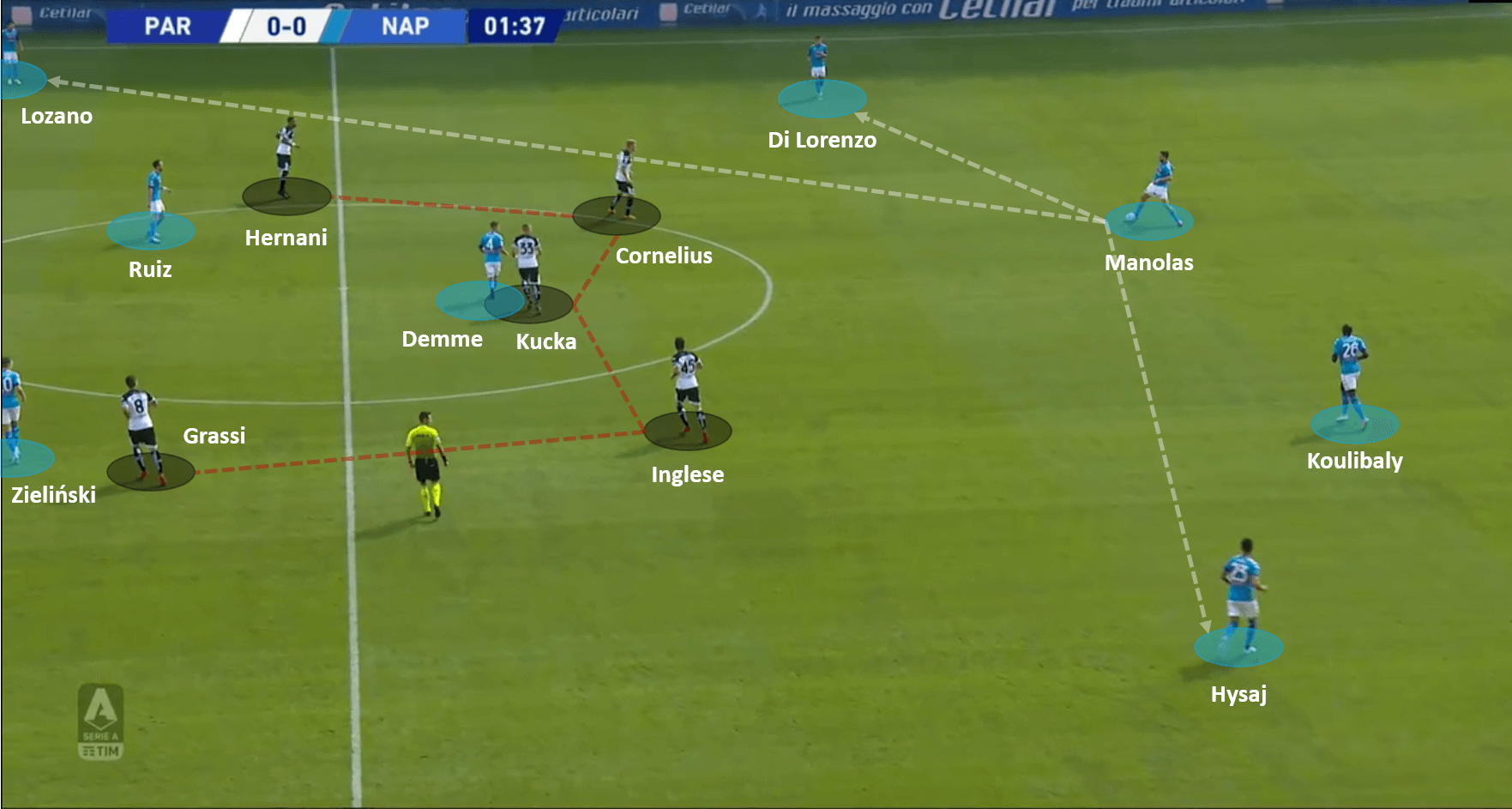
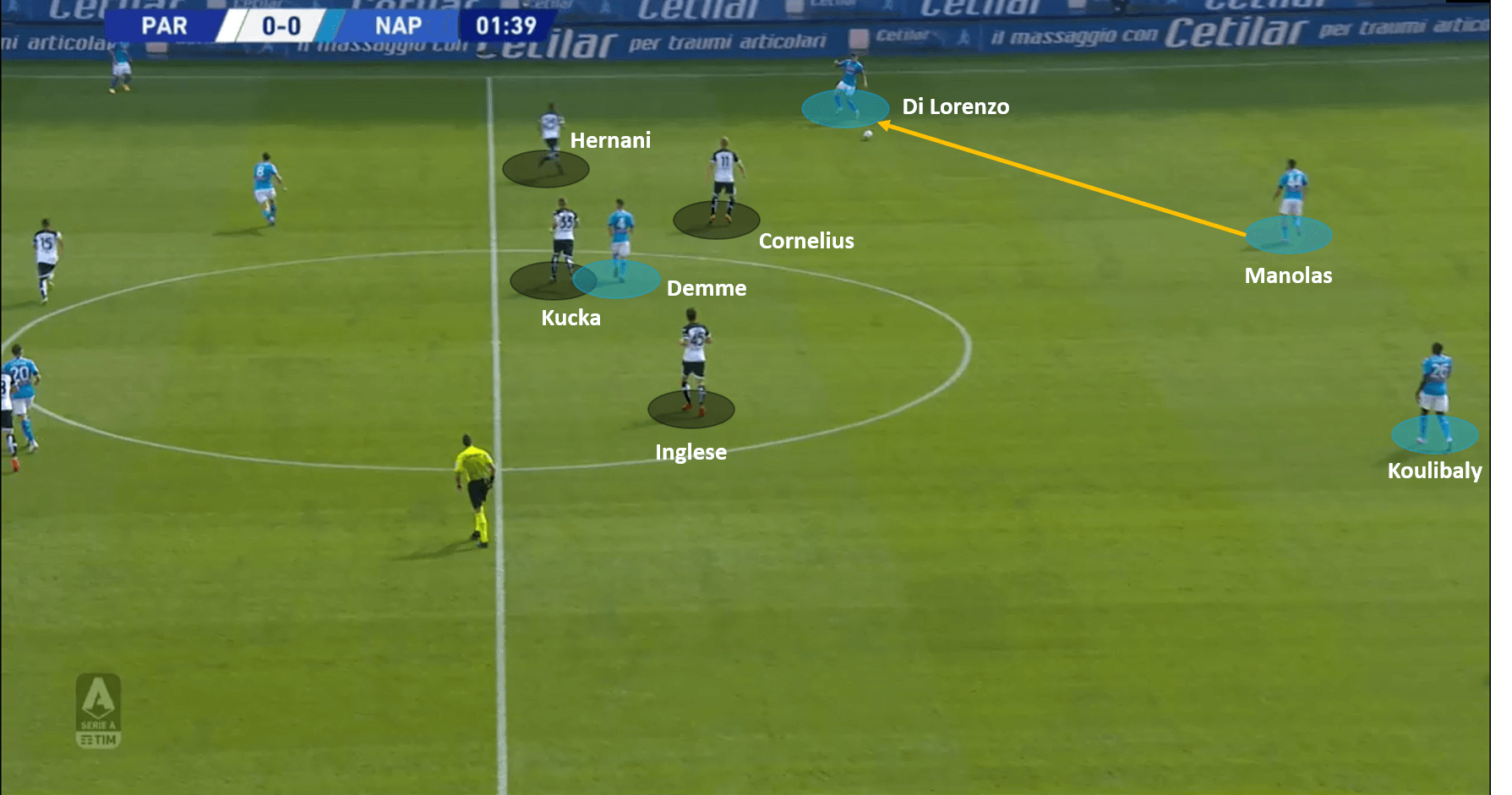
A similar instance followed in the very next minute. Parma were executing their shape and pressing tactics well right from the first minute. Below are the images to support the analysis.
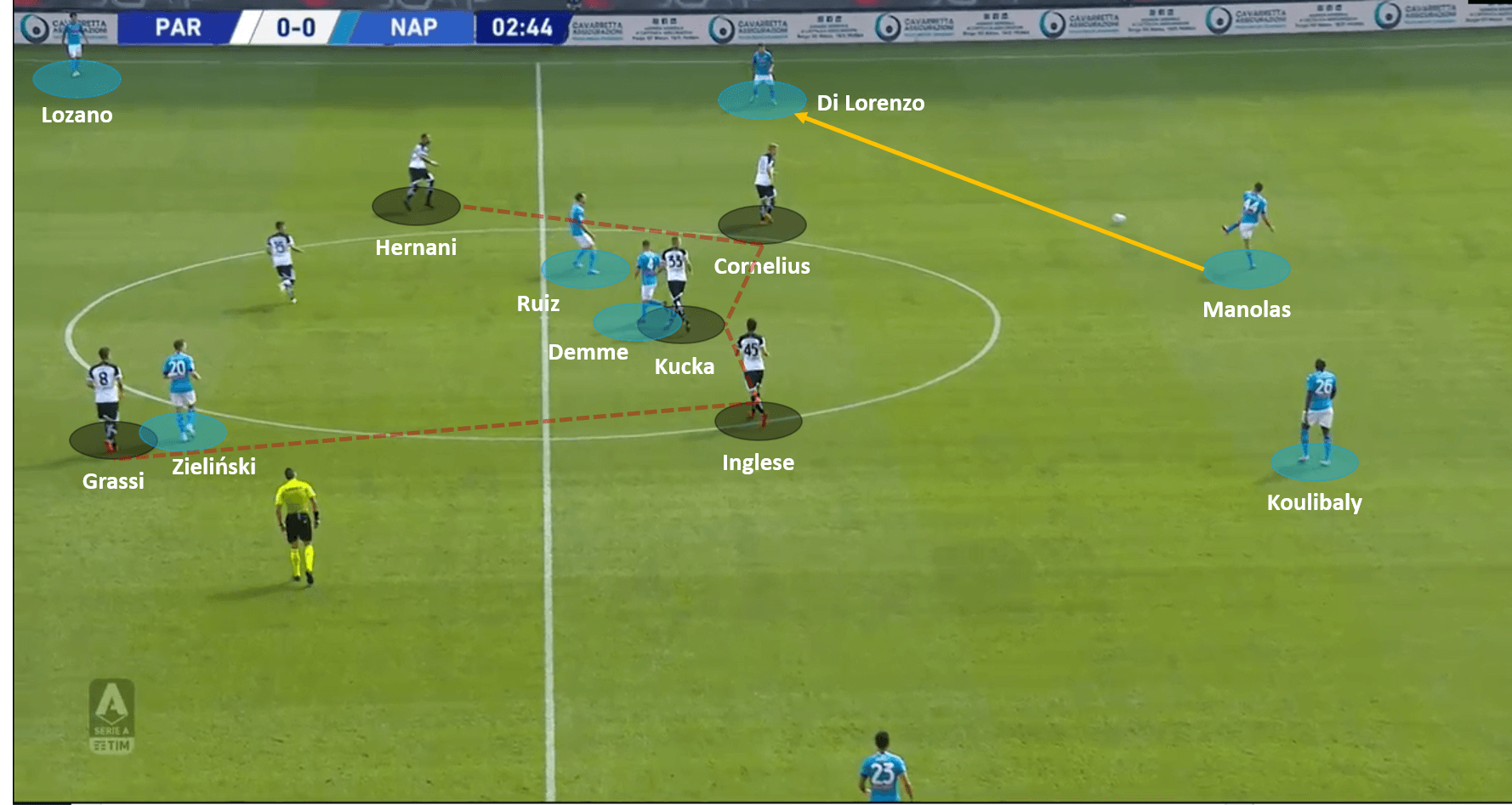
Parma were consistently able to wall the Napoli midfield throughout the first half. Below is an instance from the 35th minute of the game, where we see the wall come into effect again.
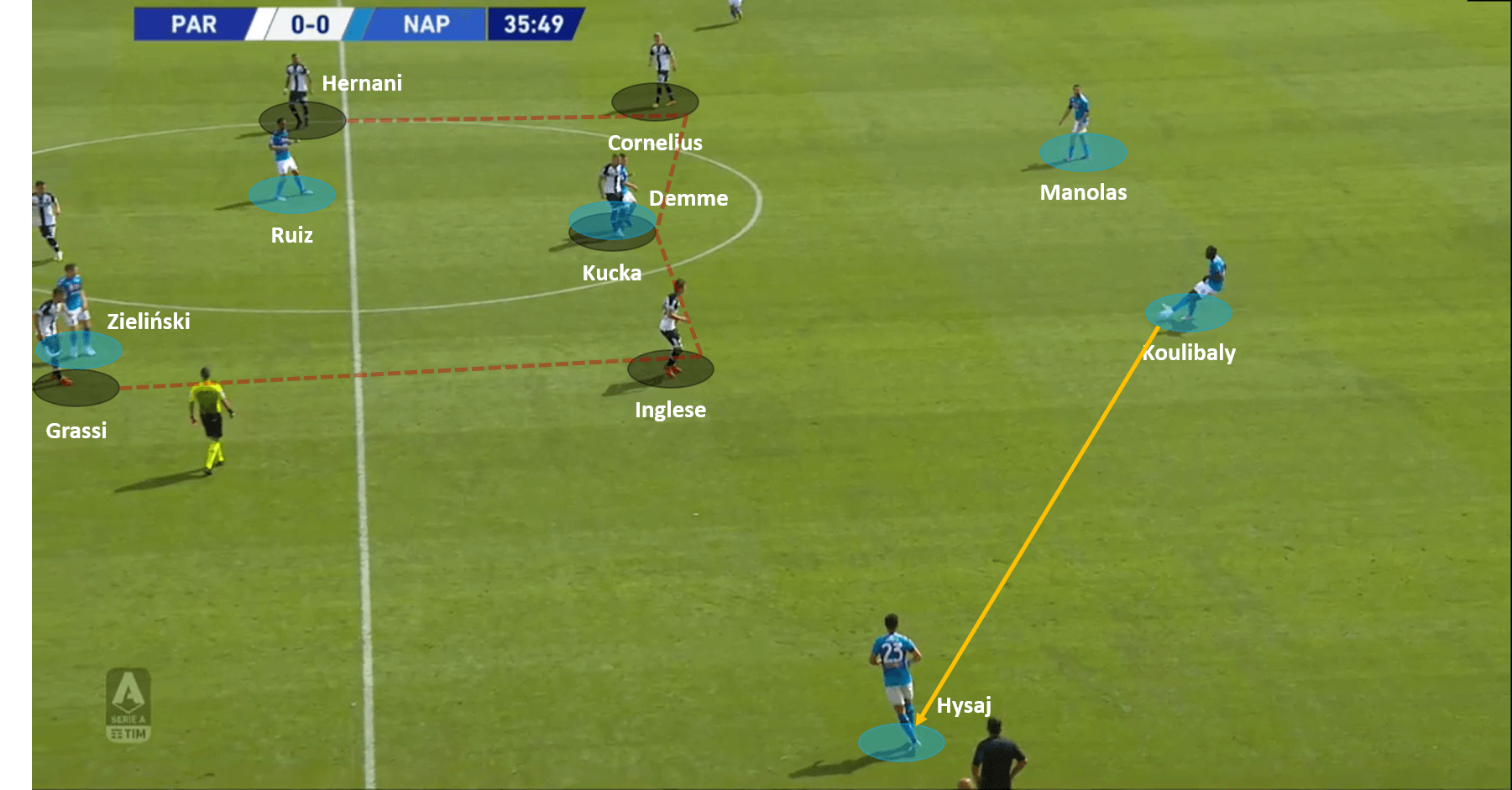
By reducing space in the middle, Parma were able to successfully contain the visitors, giving them nearly no chances at all. They forced Napoli to play out wide and put early/late crosses in for the attackers. Given Napoli’s 4-3-3 tactics, the onus of putting those crosses in went to Di Lorenzo, Hysaj, Insigne and Lozano. However, the problem was that the Parma centre-backs were more than well equipped to handle Mertens who is not particularly known for his heading ability, strength and speed. Parma were winning this battle.
Gattuso’s Genius
60 minutes into the game, thus par Parma had managed to match Napoli’s tactics and play. They had closed down the passage of play between the Napoli defence and midfield, causing most of their play to move out wide. This wasn’t working well for Napoli, and a change had to be made. In the 61st minute, Gattuso brought on Victor Osimhen in place of the holding midfielder Demme. The analysis shows that this changed the Napoli tactics and formation from the 4-3-3 with a narrow midfield, to a 4-4-2 with width – Insigne and Lozano dropped back into the midfield to provide the width. This section of the tactical analysis is about the change in formation and the introduction of Osimhen. The below images indicate the change in formation.
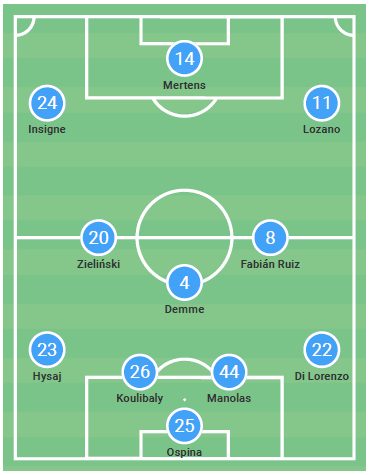
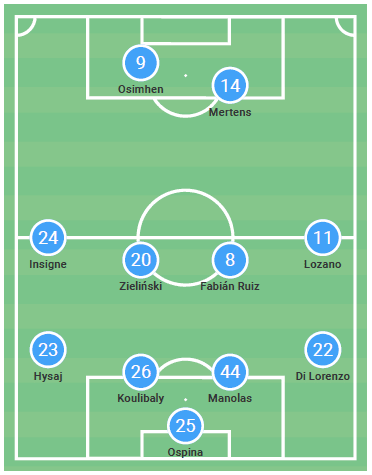
This change in formation and tactics was a masterstroke by Gattuso. For until then, Napoli’s midfield three were caged by the Parma wall. The change to a 4-4-2 meant that Parma were outmanned in the middle of the park, and were, therefore, unable to adapt and contain the Napoli midfield anymore. While Napoli’s two central midfielders were still caged, the wingers were dictating play now and putting in all sorts of crosses into the box. Even the receiving end of the crosses had changed from the first 60 minutes. For the first 60, Mertens was the sole man up to receive the crosses, but the changed tactics now had Mertens along with the speed and physicality of Osimhen up top. Two forwards going up against two defenders is always going to be better than one forward against two, something Napoli played with for 60 minutes. The change led to more chances in the remaining 30 minutes than in the opening 60; more purpose and creativity than in the opening 60; and more importantly for Napoli – more goals than in the first 60. This was as much a result of Osimhen’s movement as it was of the change in tactics. The below analysis takes a look at how both the aforementioned factors combined to lead to Napoli’s opener.
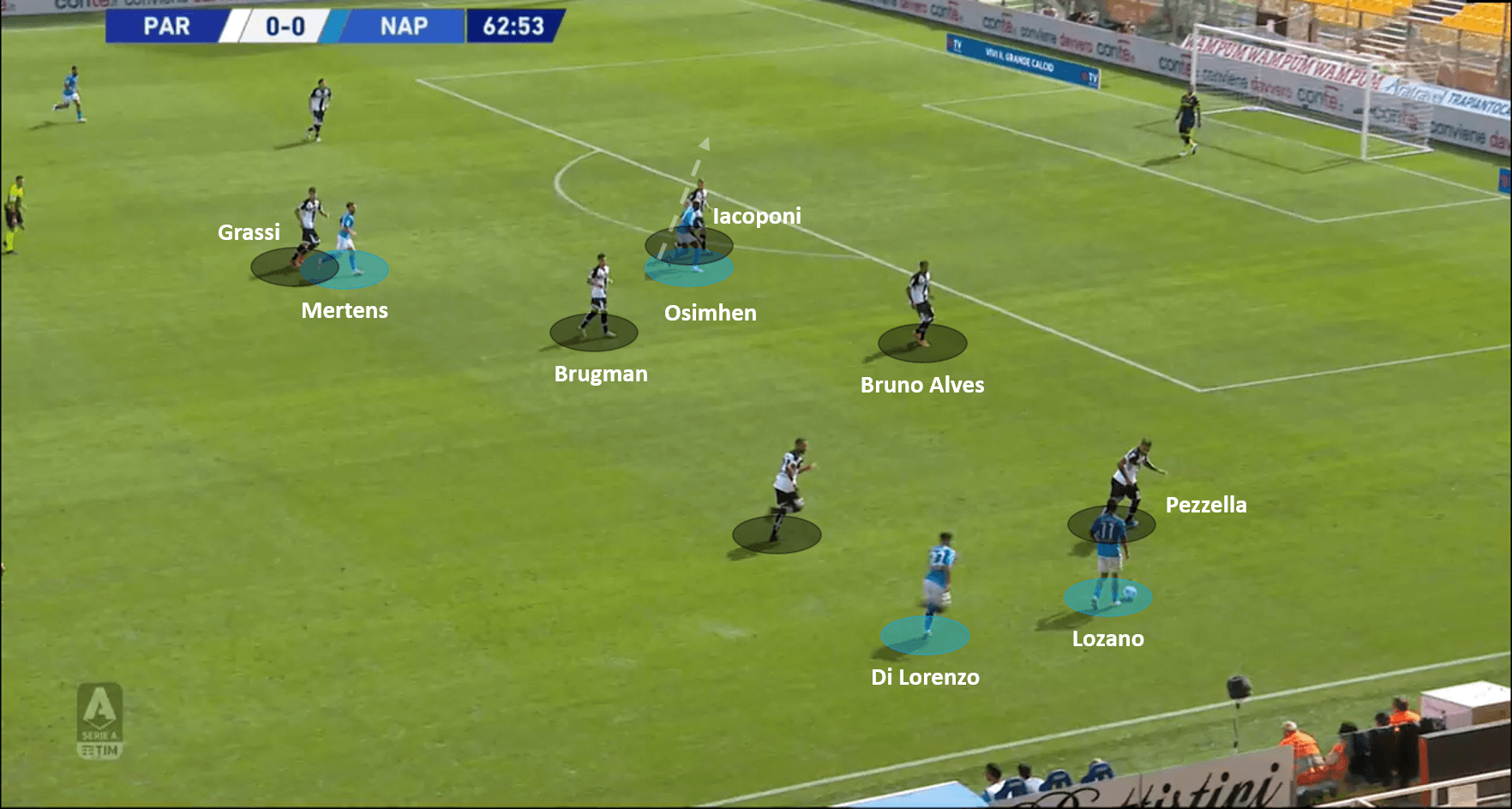
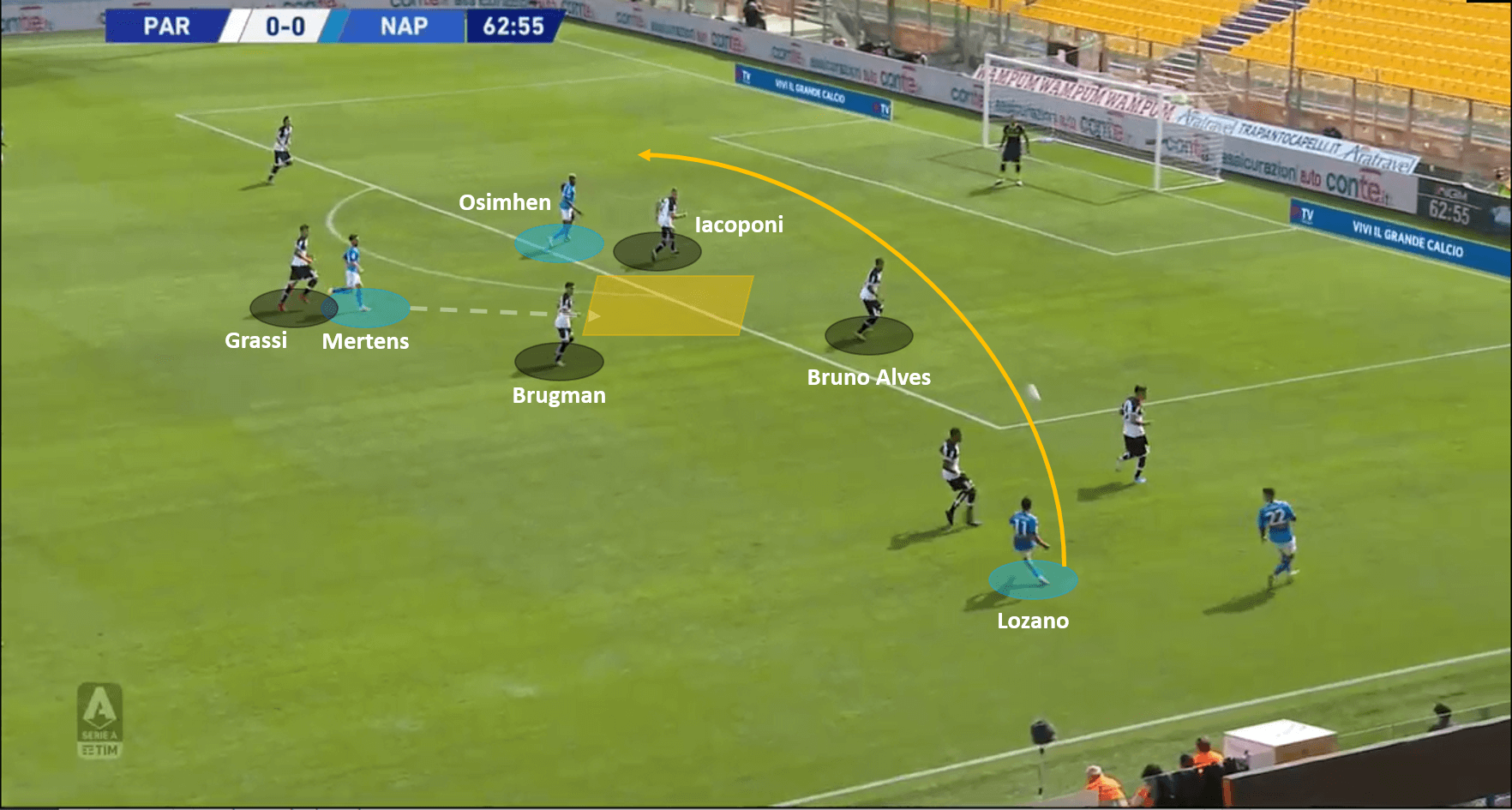

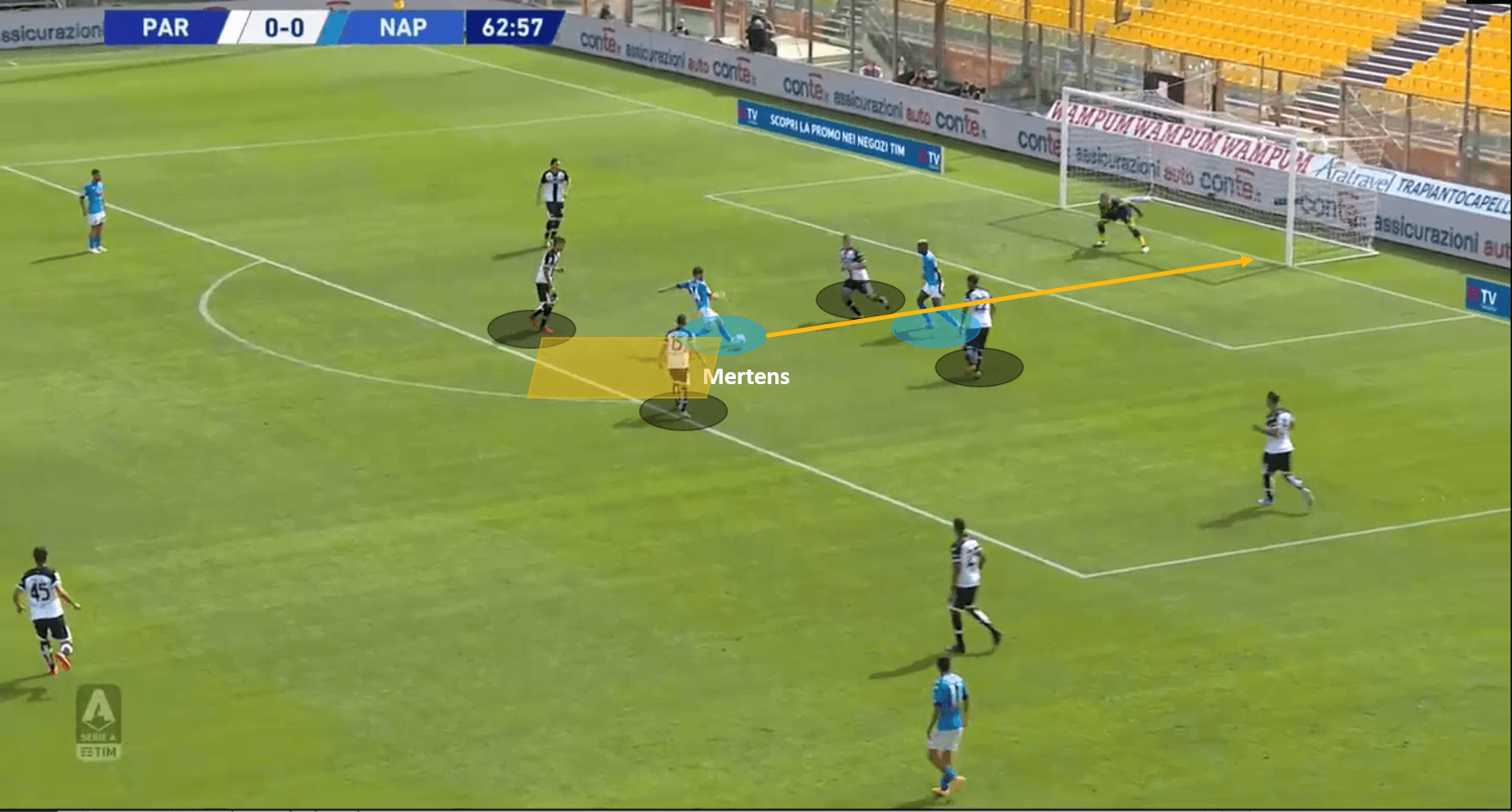
As the analysis shows, the change in tactics confused the Parma shape. They were slow to adapt to the changed tactics and the two-man forward line of Osimhen and Mertens punished them within minutes of the change. Credit to Gattuso for the changed two-man frontline, and the inspired change to add width in the midfield to unbox his caged midfielders.
Parma’s sloppy passing
Parma had been sloppy in possession for the most part of the match. To start with, they saw much less of the ball than their opposition anyway, and whatever little they did see of it – they didn’t make much of. To not be able to create chances from the possession, especially in the first game of the season, is still acceptable as it can difficult to find a rhythm. However, to be sloppy in passing and to give the ball away cheaply could prove very costly. And it did, in this game. This section of the tactical analysis takes a look into a few instances where Parma lost the ball cheaply, and this ultimately leads to them conceding the second goal of the game. The analysis first looks at a cou0ple of instances where despite having safer options to pass the ball, the Parma players made a poor pass which led to loss in possession. In the later part of this section of the tactical analysis, we look into the instance where a poor pass led to loss in possession which led to a goal.
Below is the first instance for the analysis. Hernani has at least three safe passing options, but instead makes a poor decision and passes it to the wrong player. His pass is intercepted by Napoli and possession is lost. The below images support the analysis.
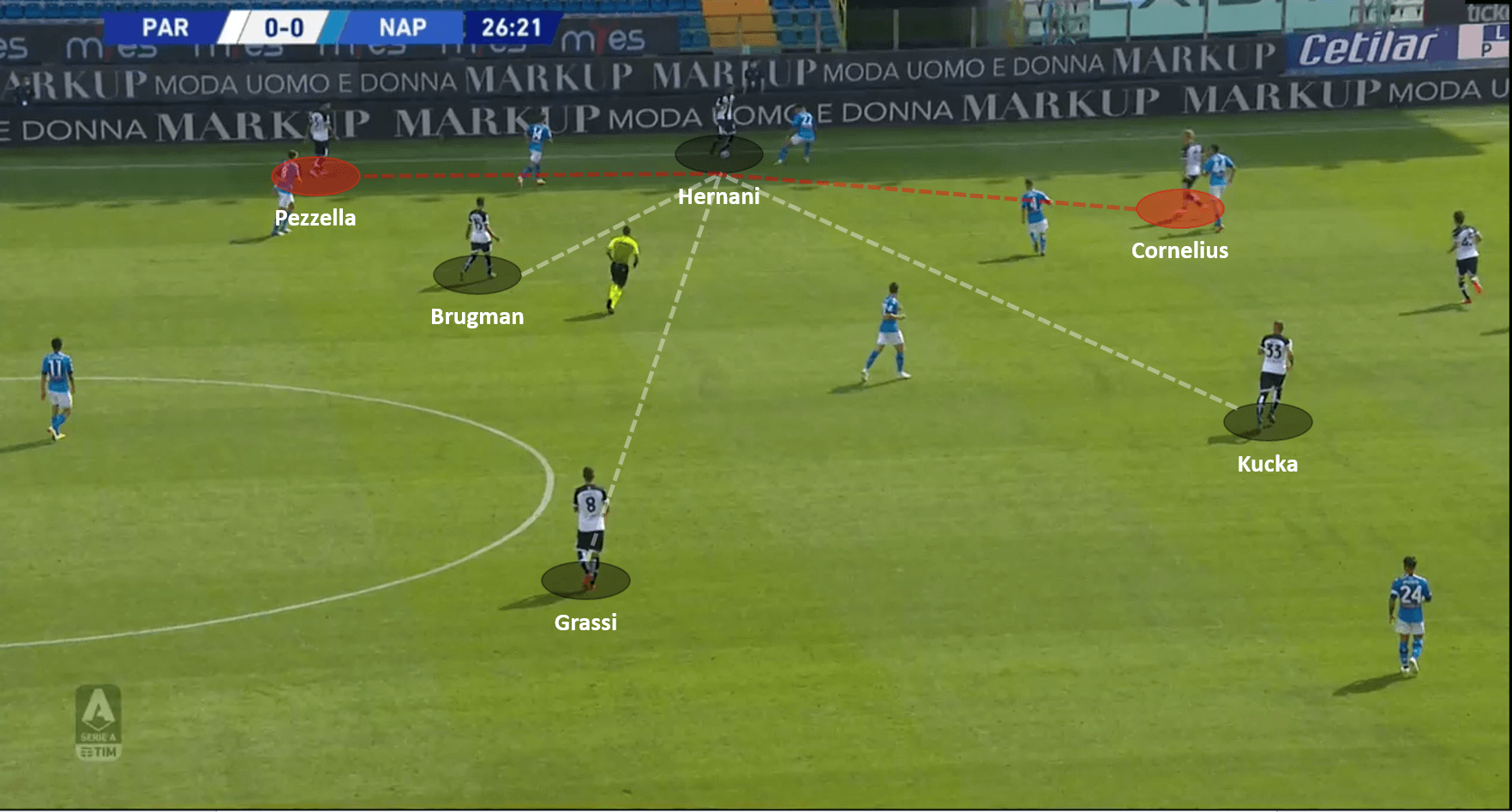
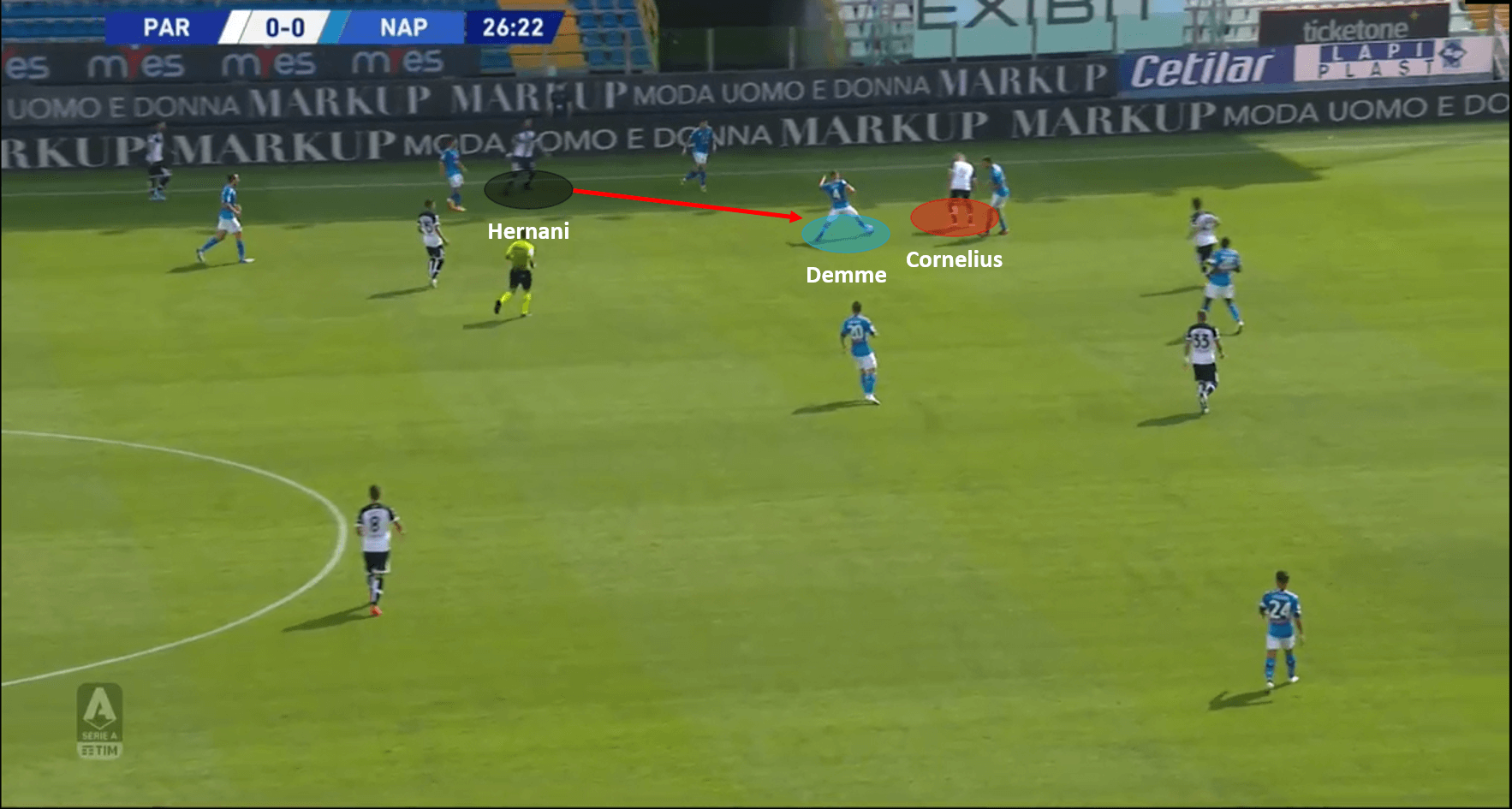
Another such instance for the analysis is below when Napoli won back possession after Parma lost it cheaply. Iacoponi played an unnecessary long pass which handed possession to Napoli.
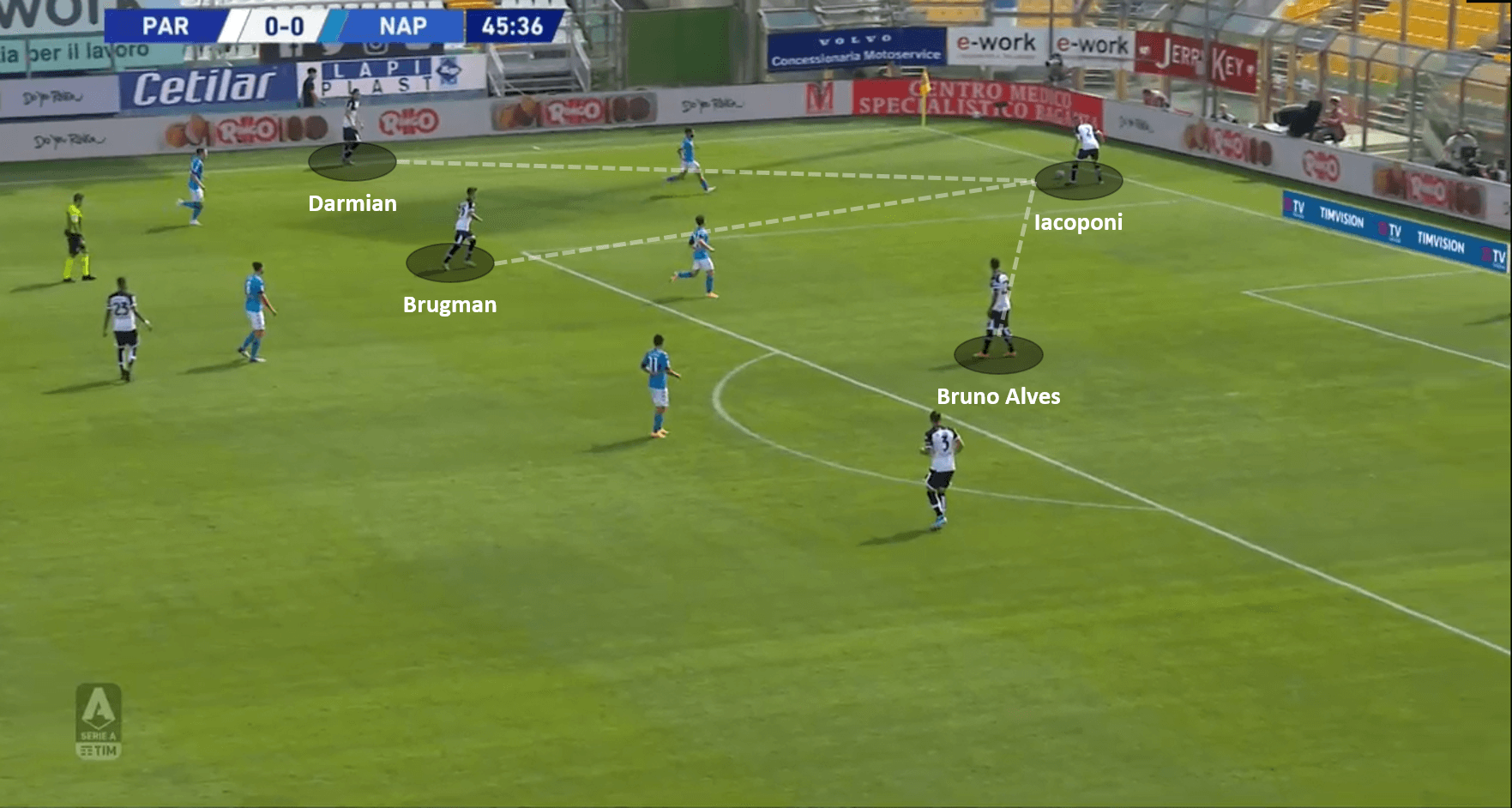
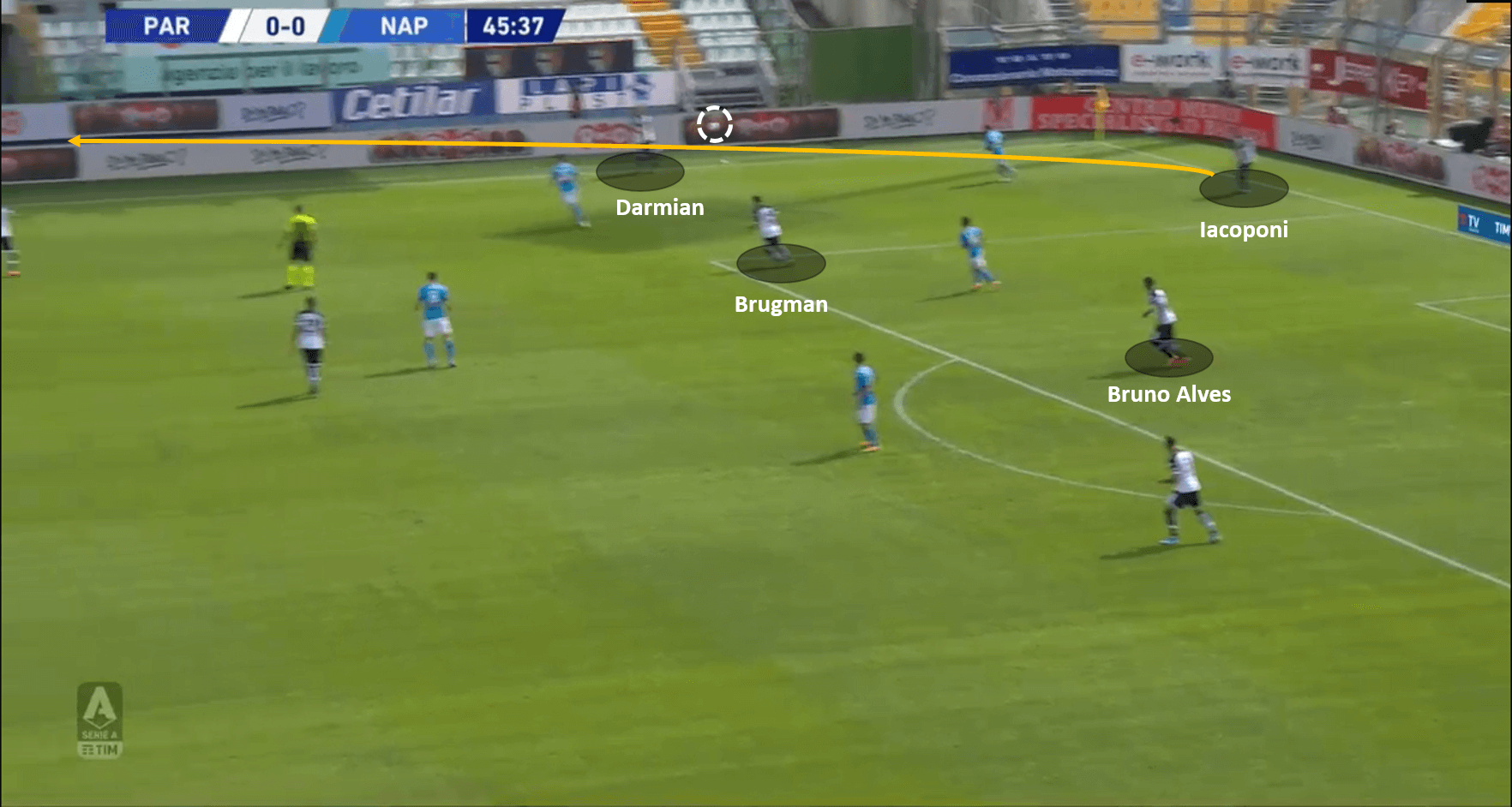
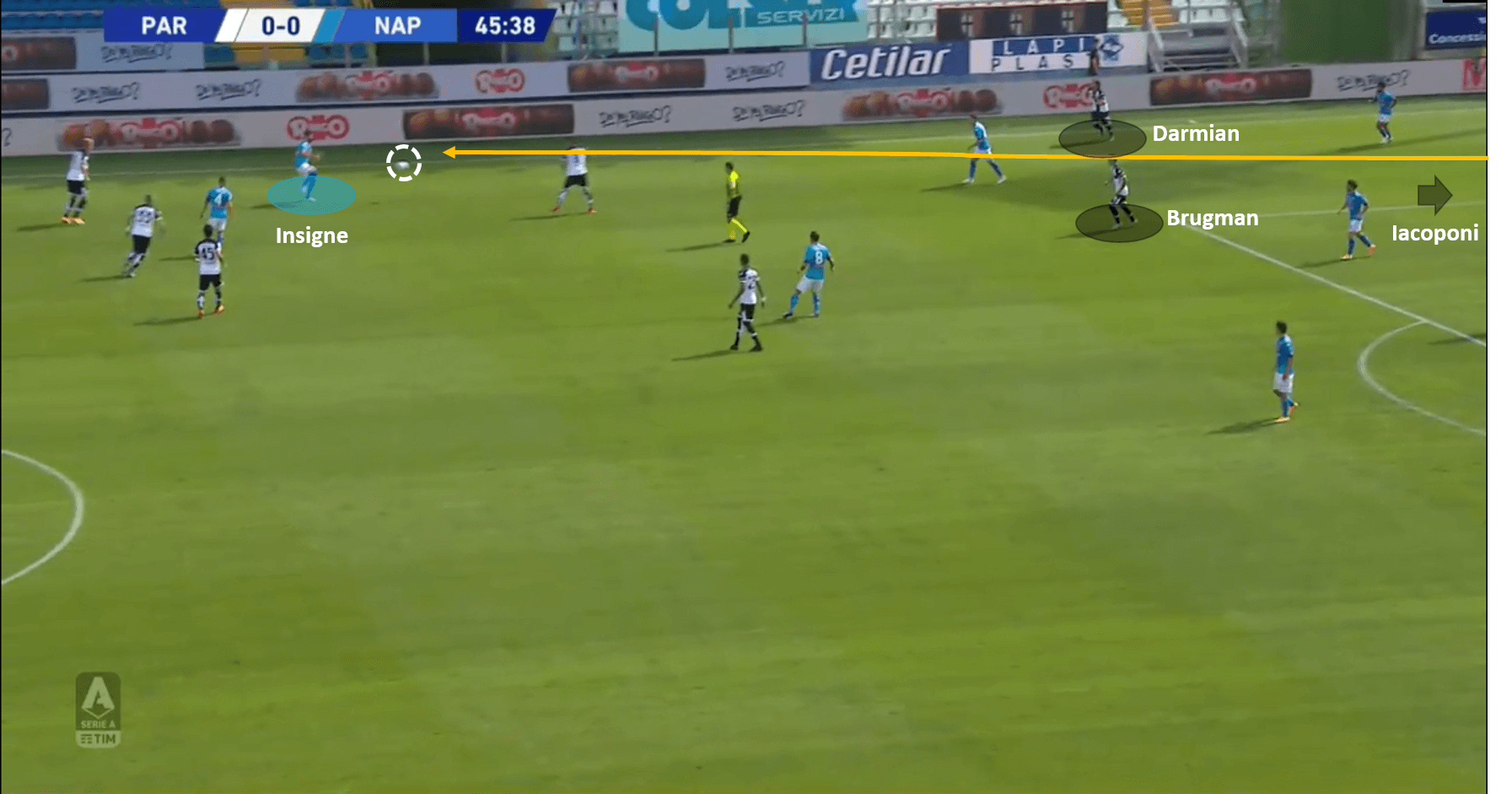
The third instance in this analysis is when a poor passing decision and a poor pass led to a change in possession. Furthermore, this change in possession directly led to a goal. Iacoponi made a poor pass towards Pezzella, which was intercepted by Lozano. Lozano raced into the Parma box with the ball, took a shot on goal which hit the keeper and fell into Insigne’s path. Insigne put the rebound into the net. 0-2 in Napoli’s favour. The below images depict the incident.
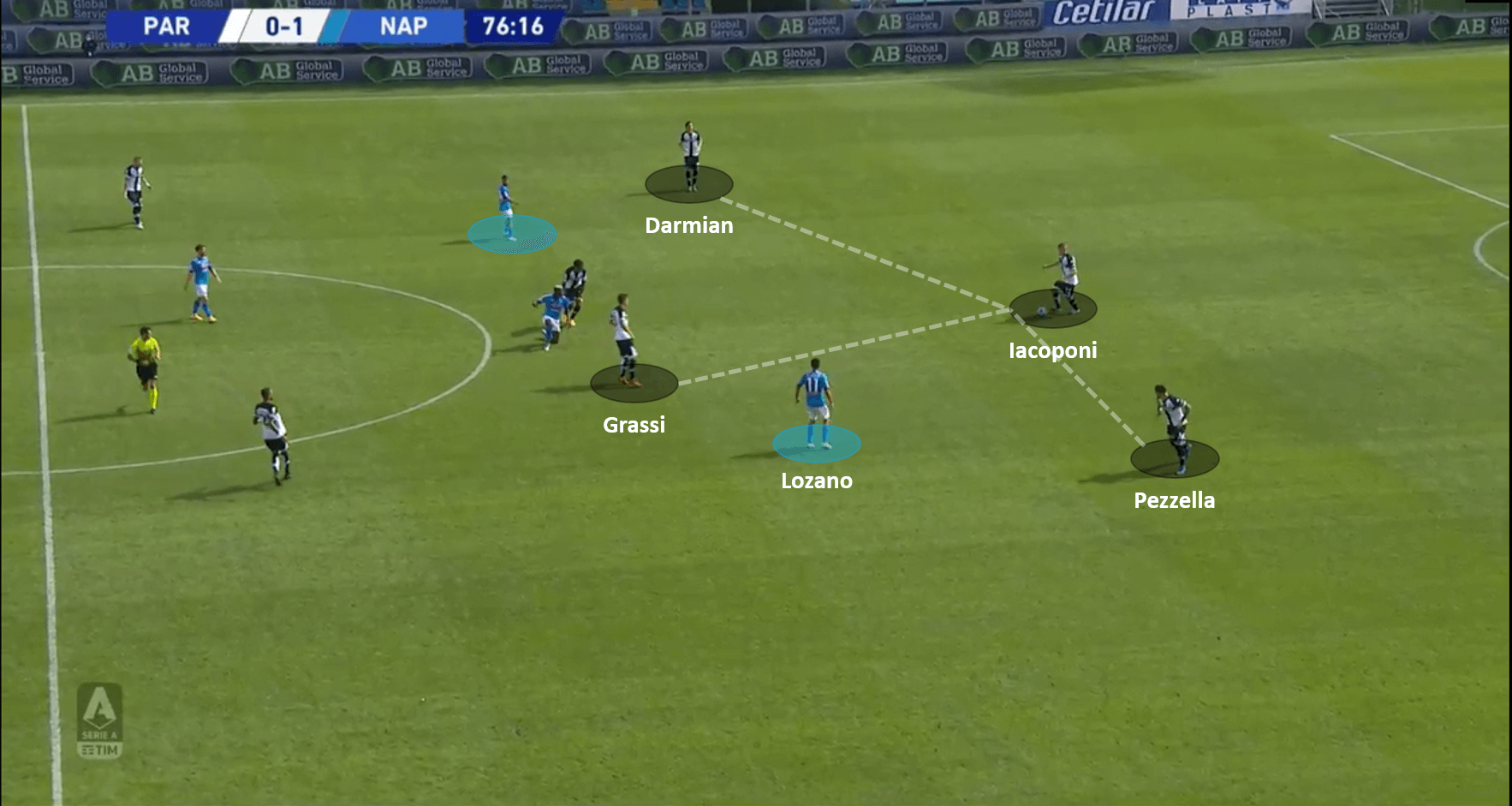
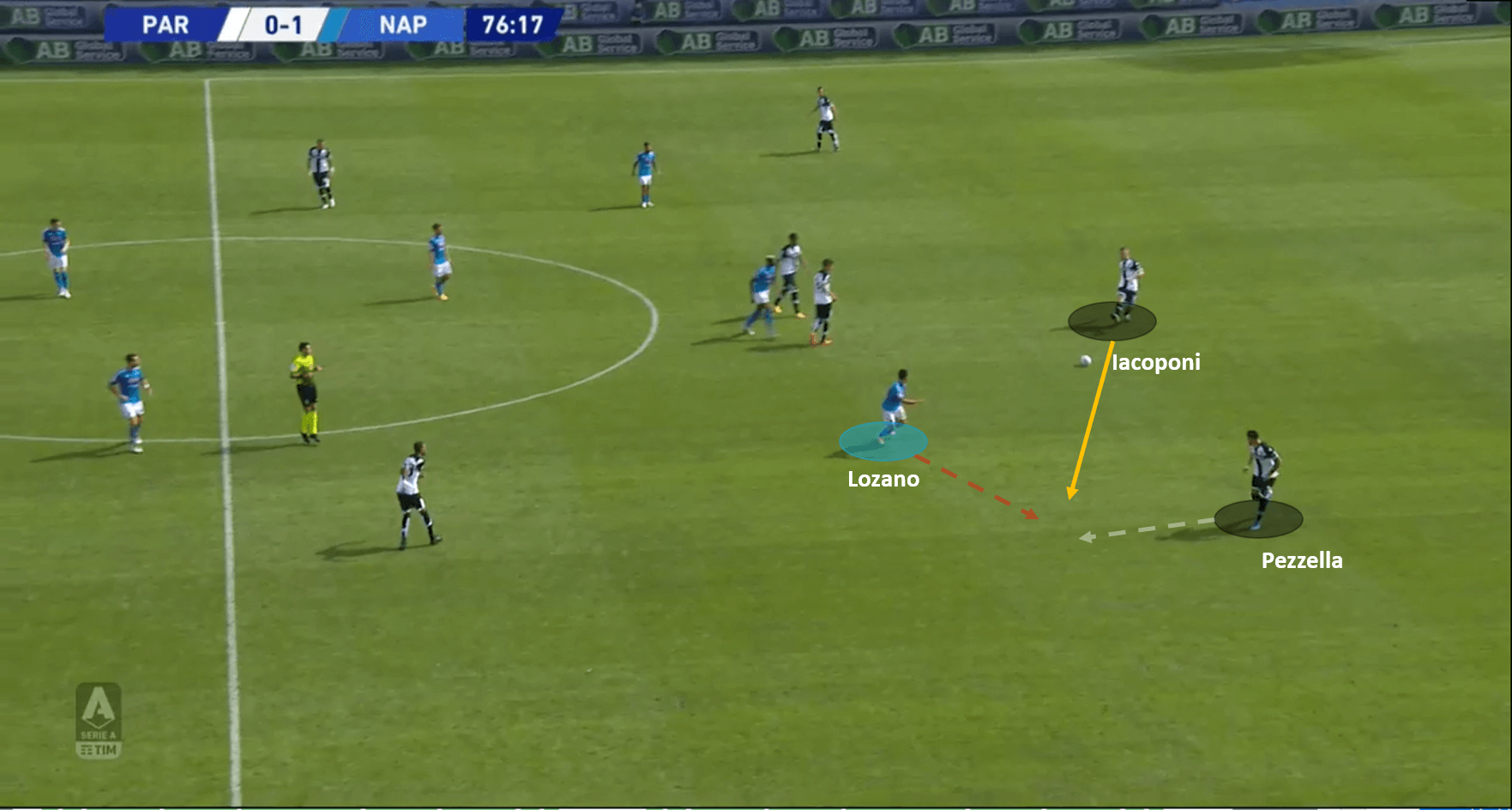
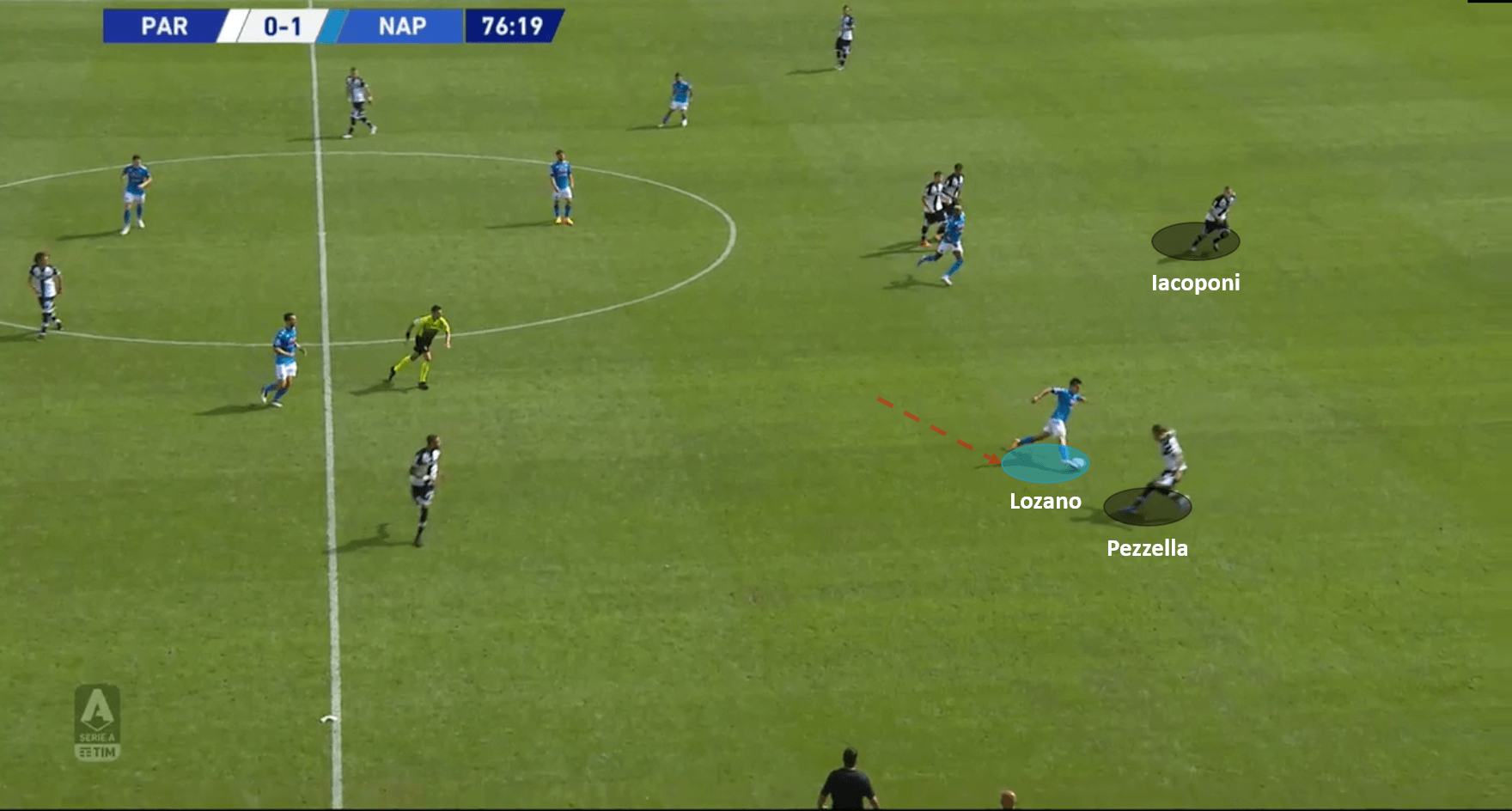
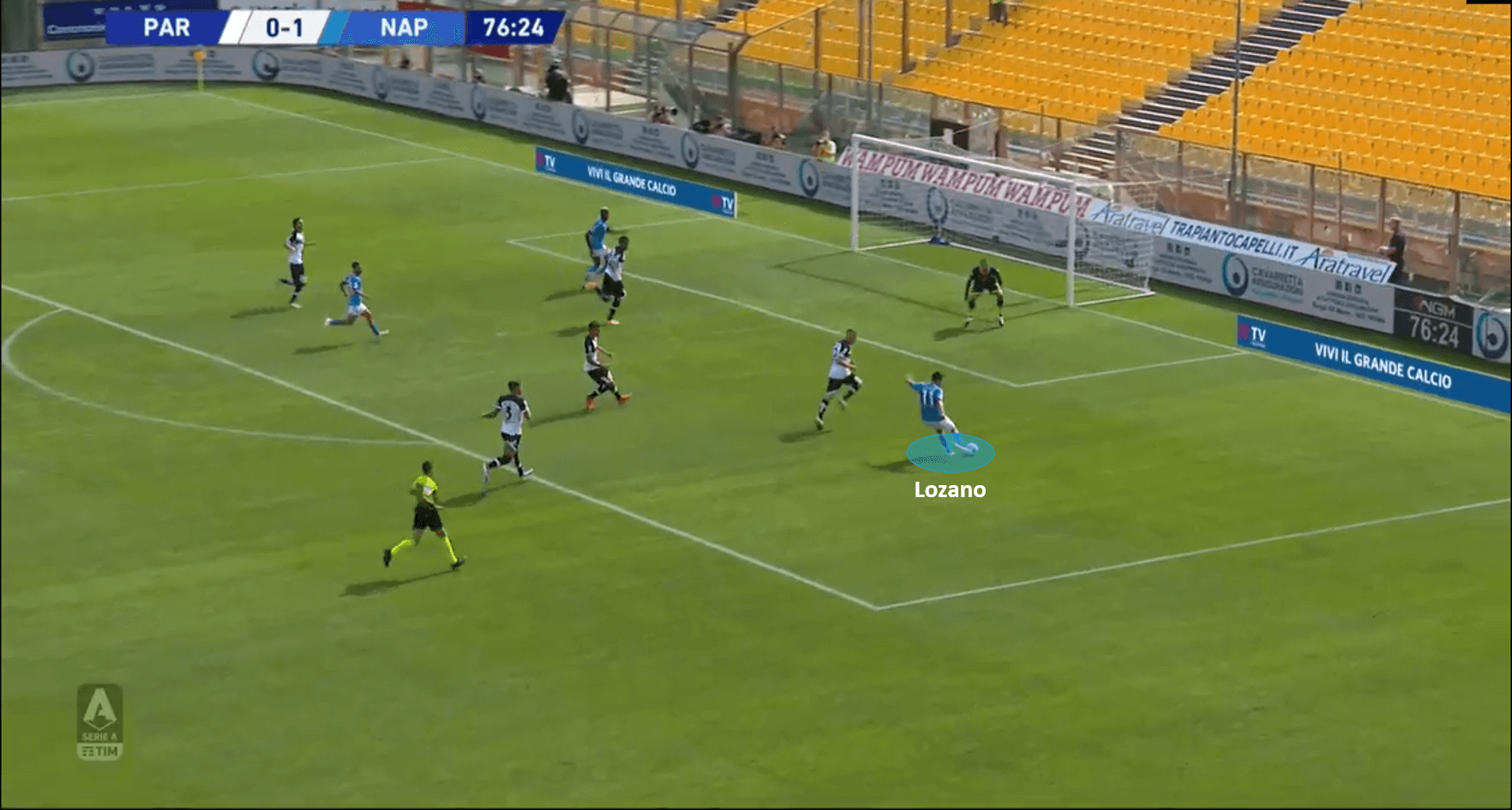
Conclusion
The tactical analysis covers some of the key events in the game which led to the result of 0-2 to Napoli. A seemingly well-matched game for the most part of the 90, the game was heading to a nil-nil scoreline as both teams seemed to still be off rhythm. If it were not for the change in formation by Napoli and the introduction of Osimhen, one could argue that the game would have ended goalless.
Napoli have started the season well, and they seem to have carried on their passing play tactics from last season. Parma, under Liverani, looked solid defensively barring the errors in passing play. With the season lying ahead of us, both teams will begin to finetune their tactics and find their rhythm as we get further into the next games. While Napoli must aim to finish in the top two-three, Parma must try and break into the top half under their new manager.






Comments